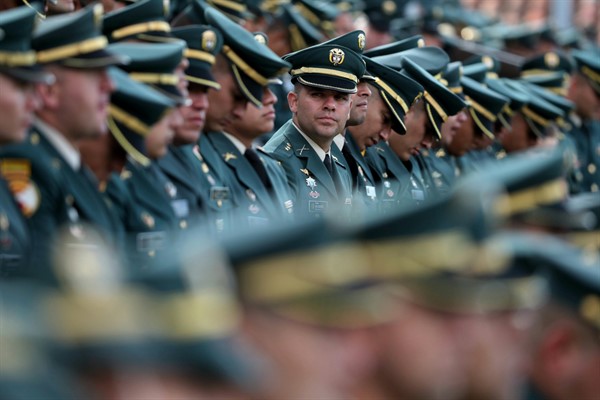When the Revolutionary Armed Forces of Colombia, or FARC, agreed to demobilize as part of Colombia’s landmark 2016 peace agreement, it ended 50 years of armed conflict. It also left the Colombian army without its chief adversary. The country still faces internal armed threats, like the smaller guerrilla group, the National Liberation Army, and about 10,000 fighters are scattered across dozens of smaller militias, some of them led by former FARC members. But for Latin America’s largest army, the adjustment has been fraught with difficulty.
The army built up a formidable intelligence apparatus during the country’s decades of internal conflict, thanks to generous assistance from the U.S., which saw Colombia as a partner in its fight against drug traffickers and terrorism. A major intelligence law that was passed in 2013, during Juan Manuel Santos’ presidency, placed important limits and oversight protections on civilian and military intelligence agencies’ ability to spy on citizens. Meanwhile, as the peace negotiations with the FARC made progress, the military changed its doctrine to adjust to a post-conflict context.
But President Ivan Duque, who came to power in 2018, comes from a political party that opposed the peace accord and is much more permissive toward the security forces. Once in office, he appointed controversial figures to senior positions, including Guillermo Botero as defense minister and Gen. Nicacio Martinez as army chief, neither of whom shared the spirit of the Santos administration’s reforms.

